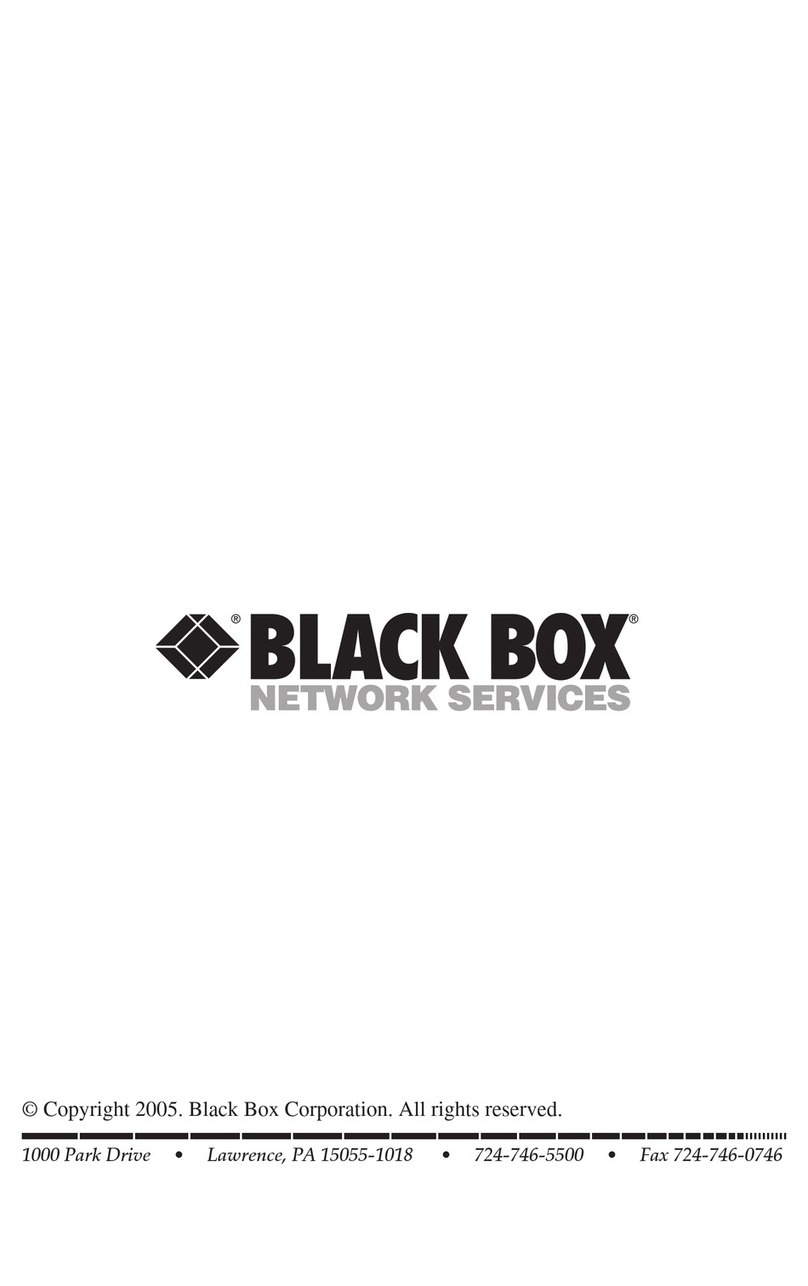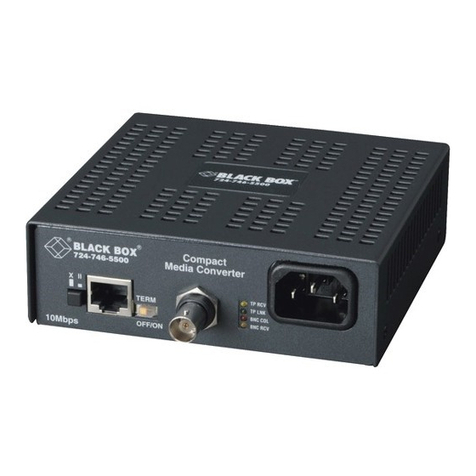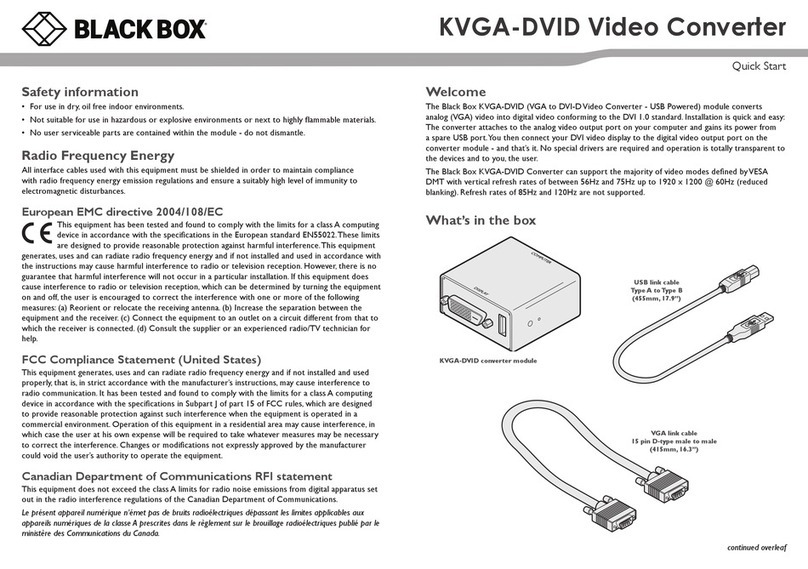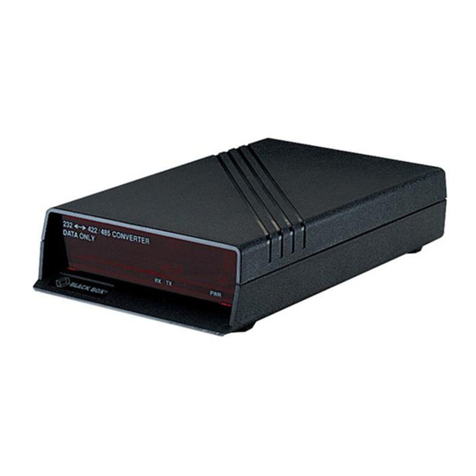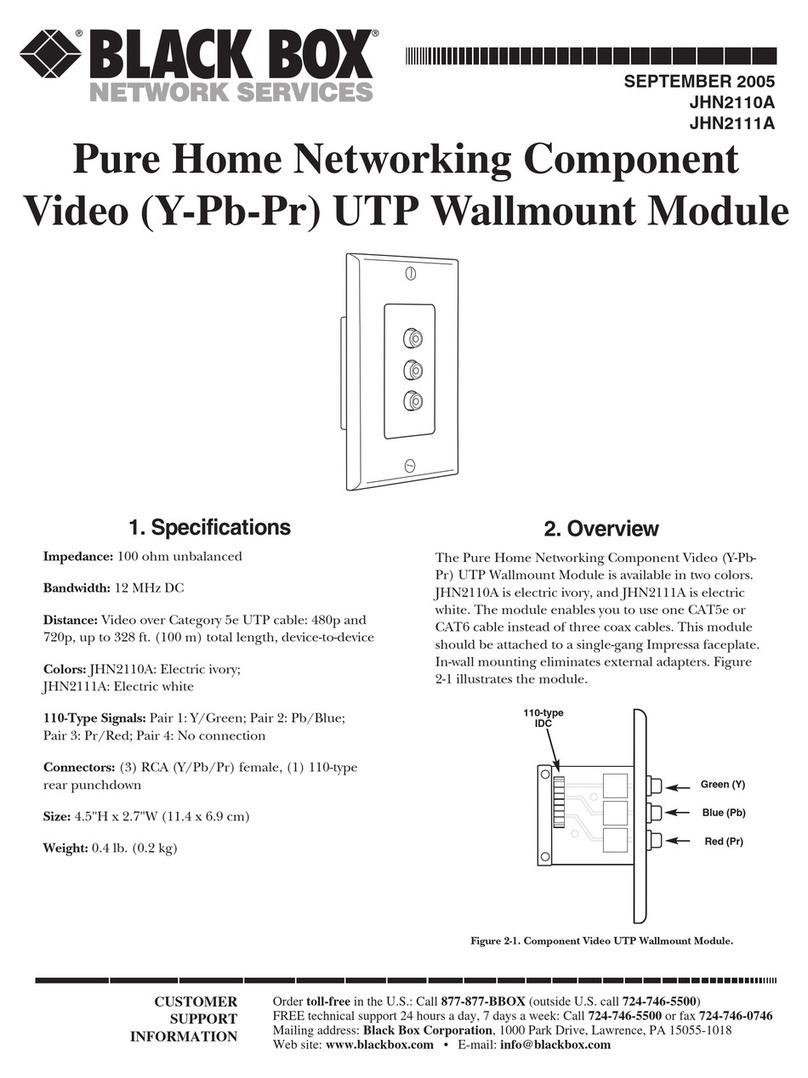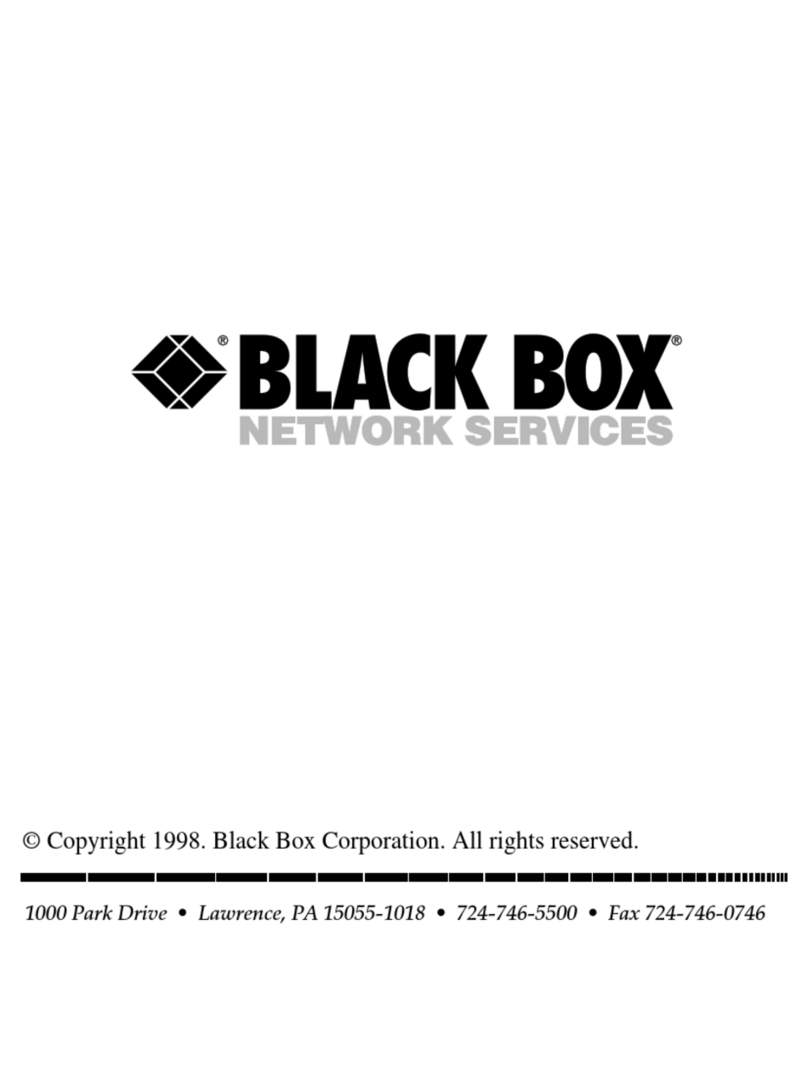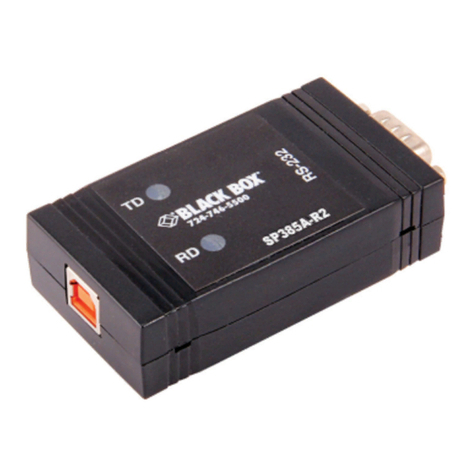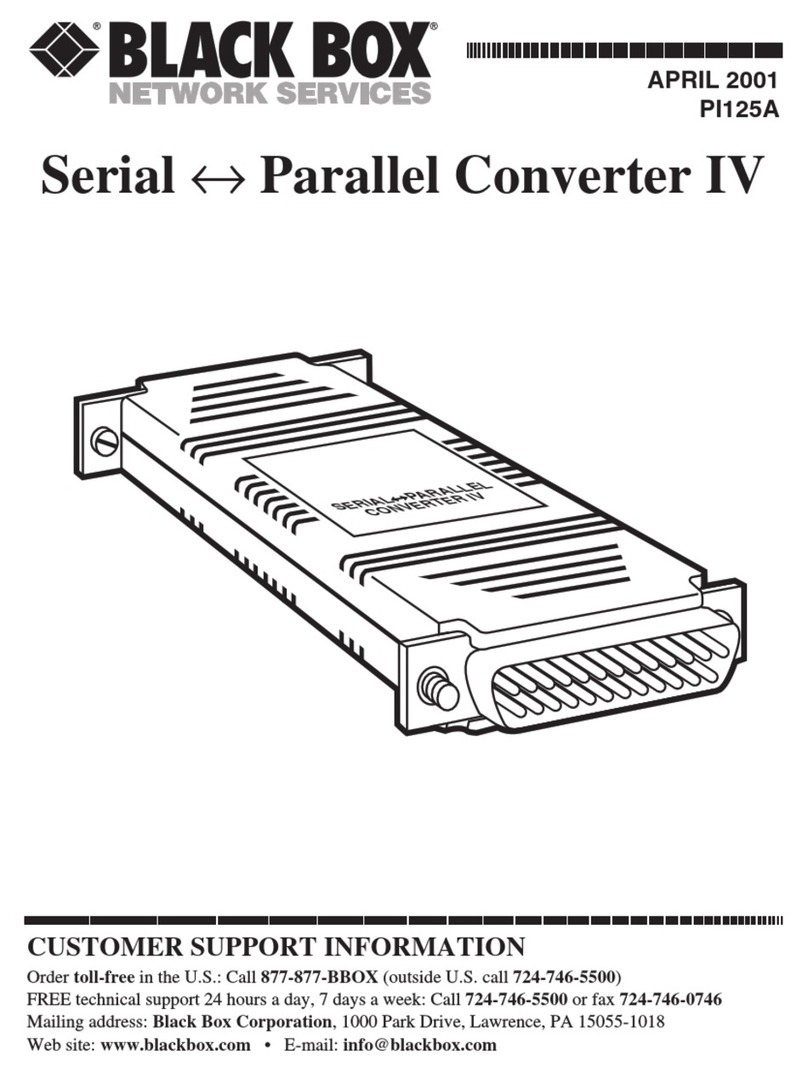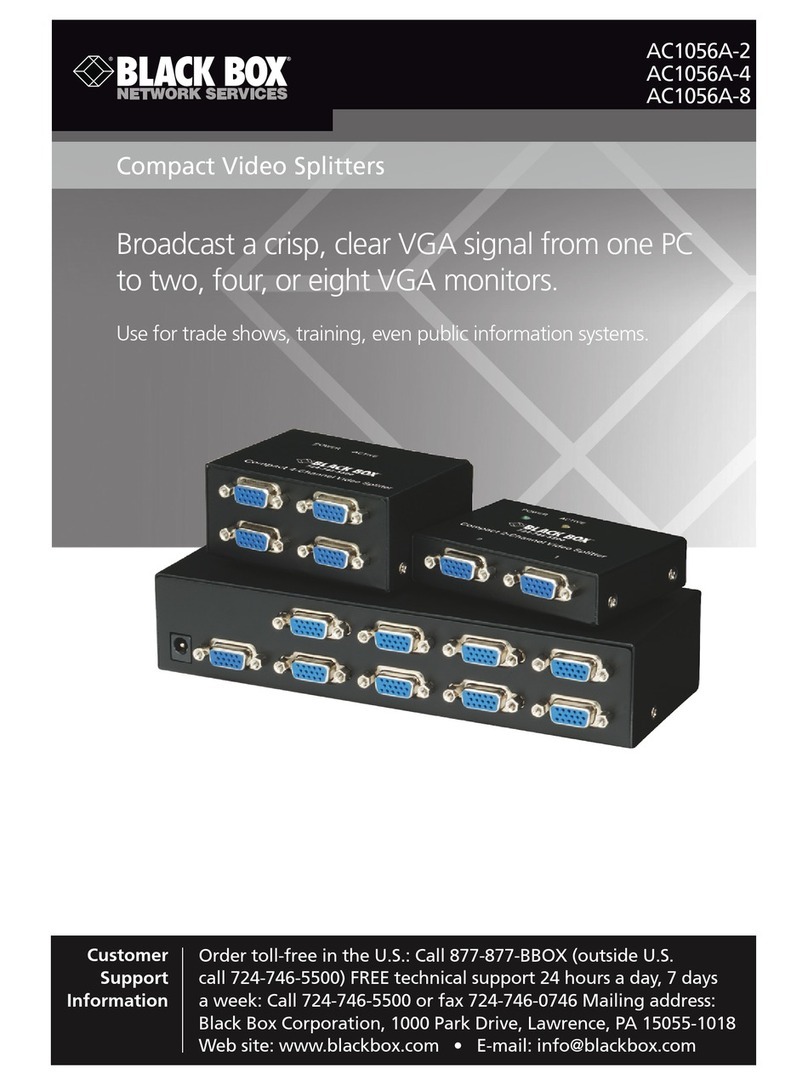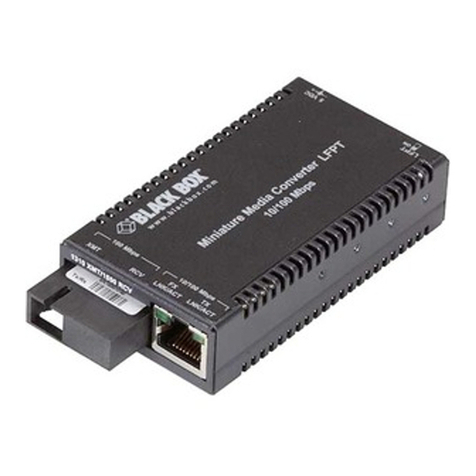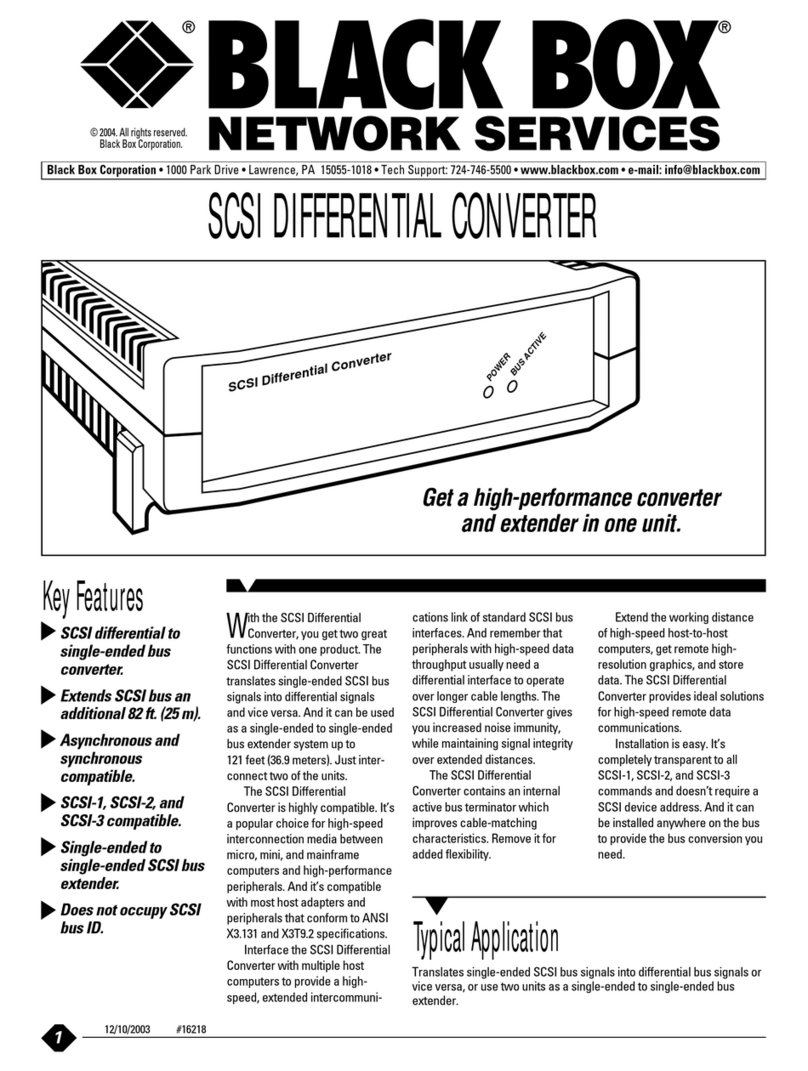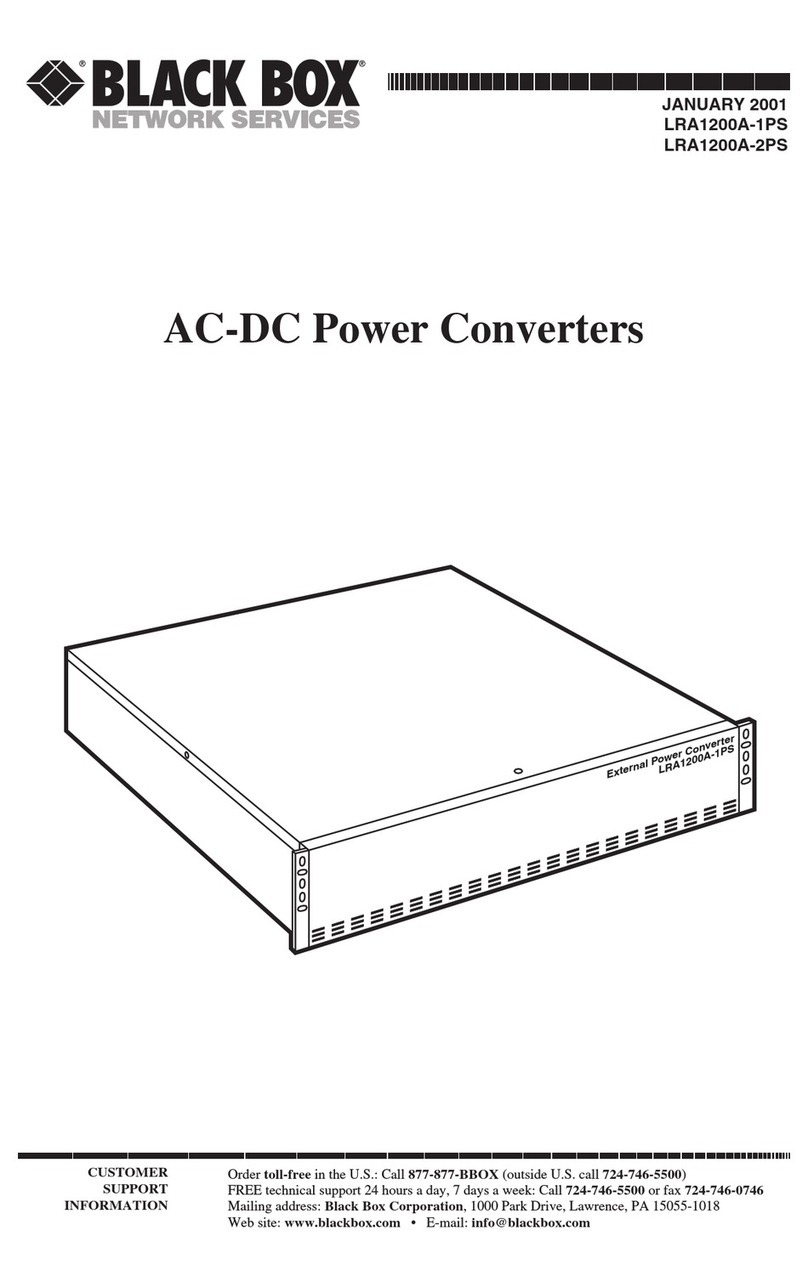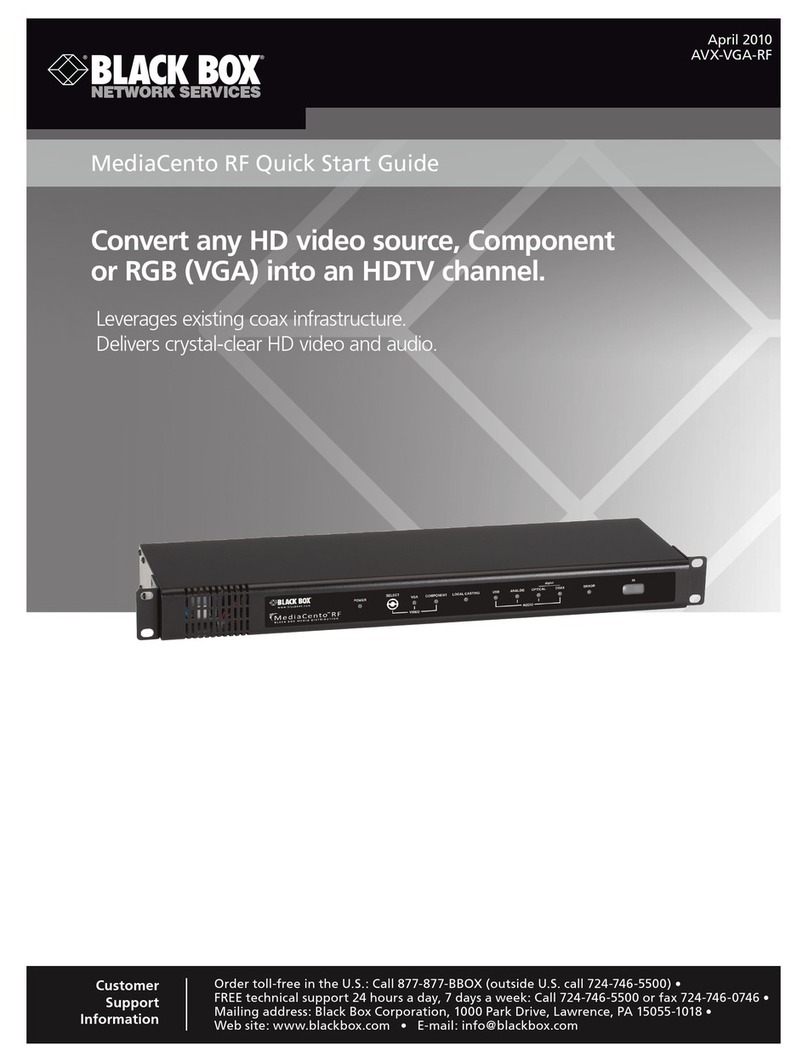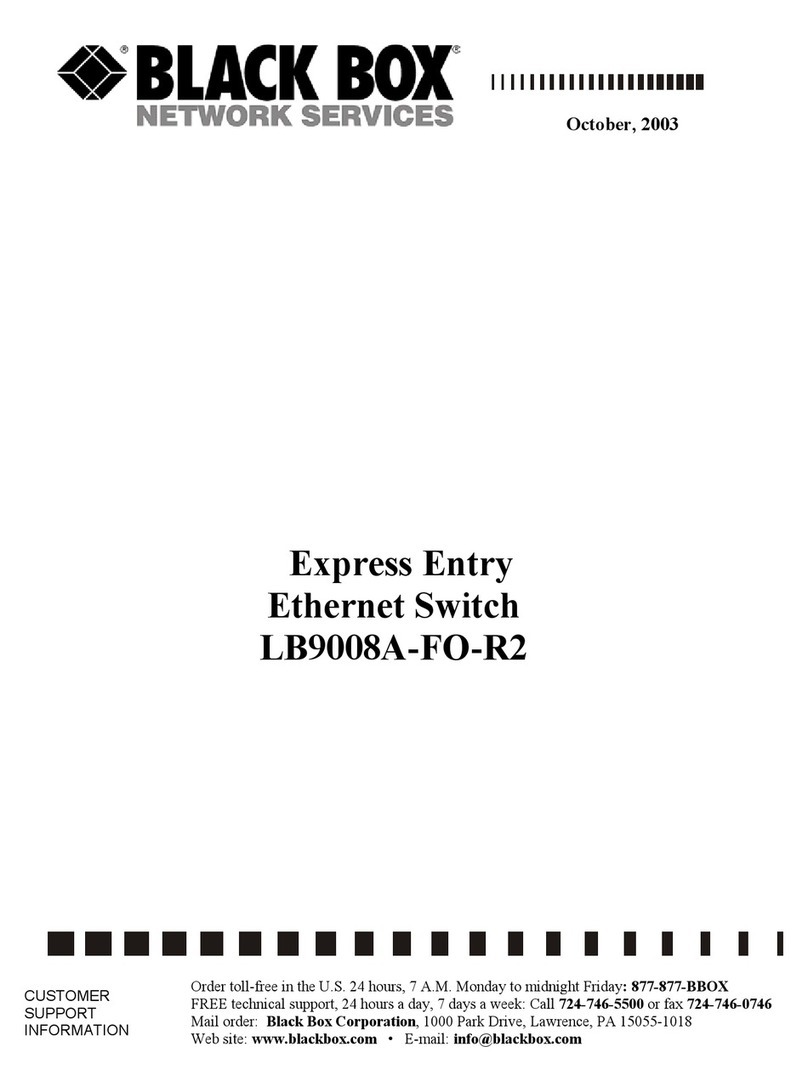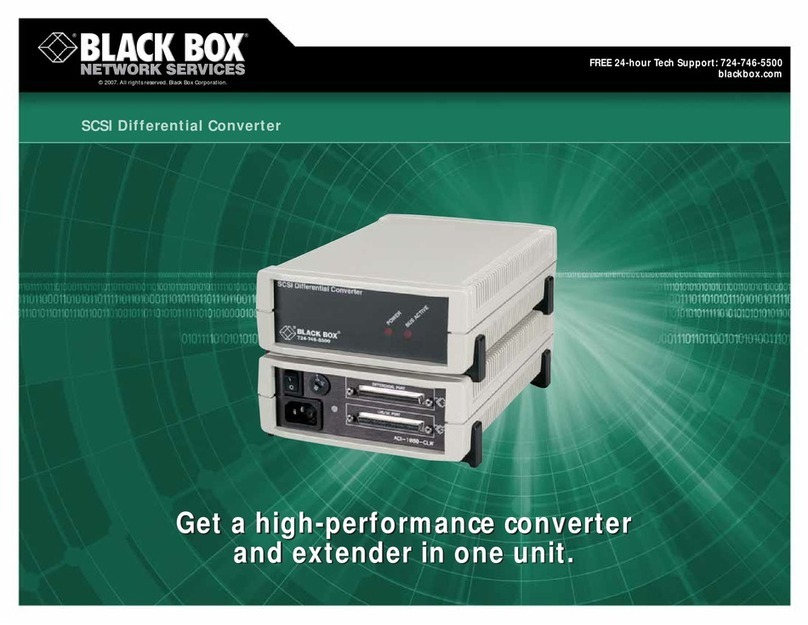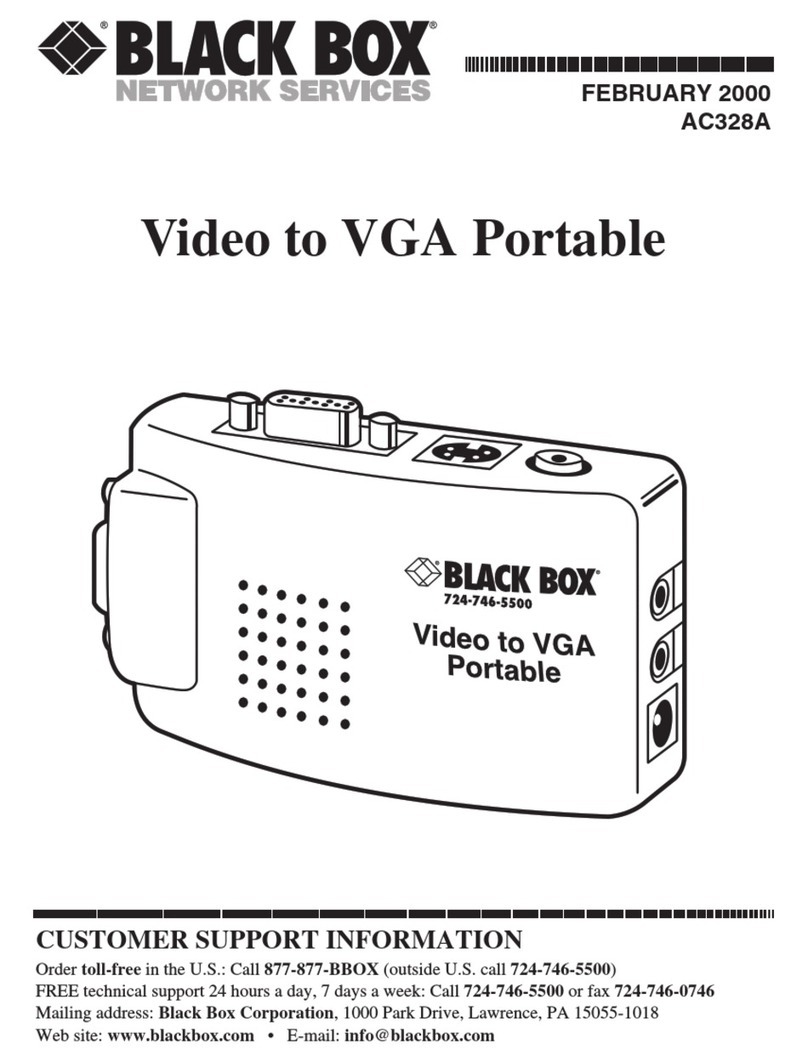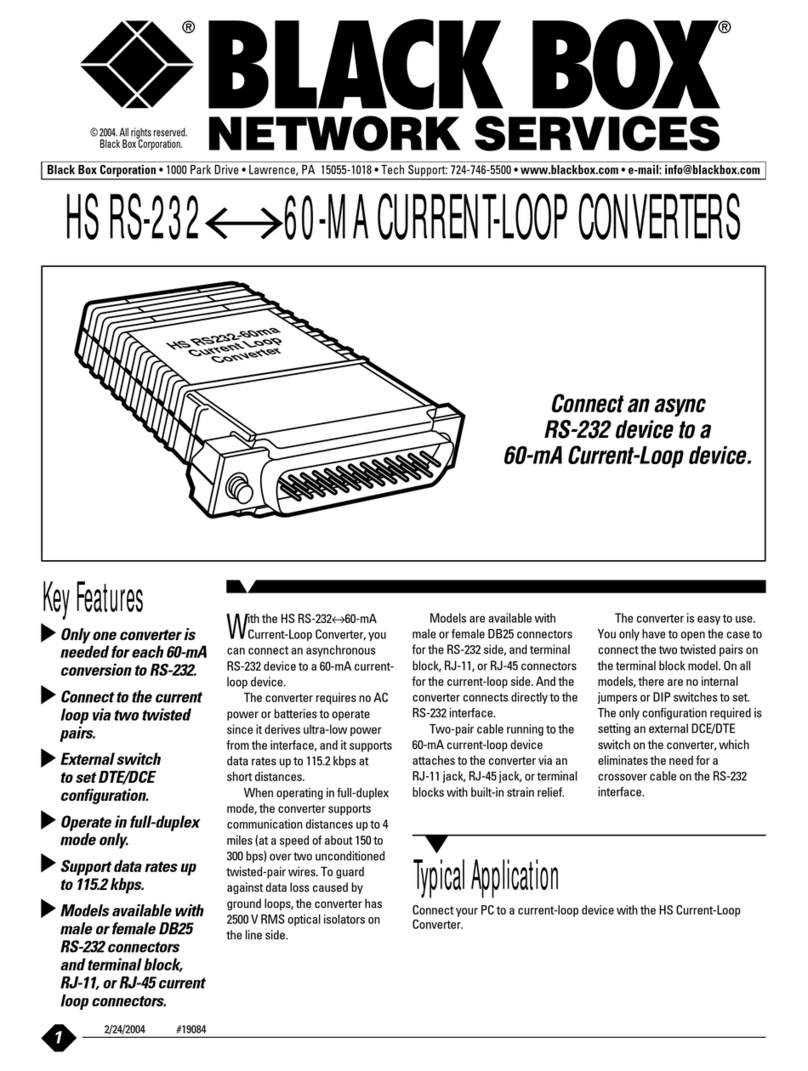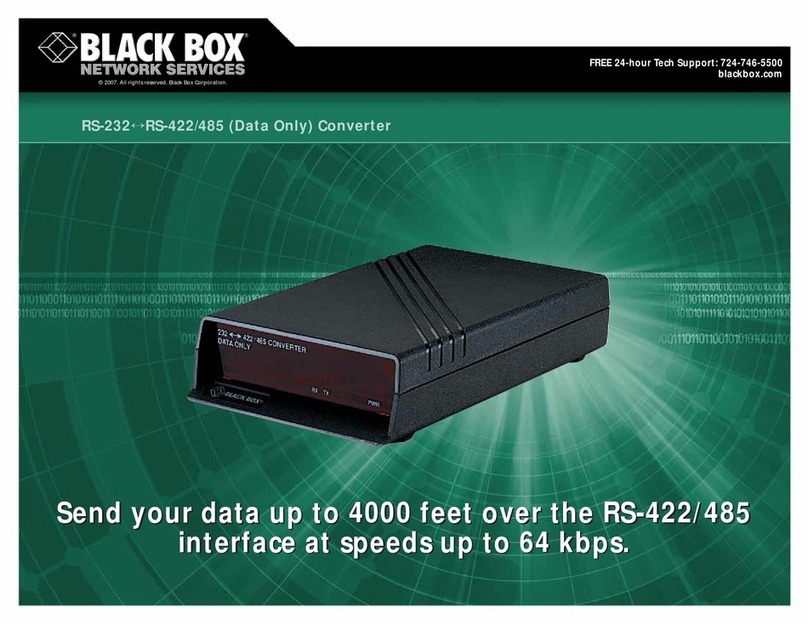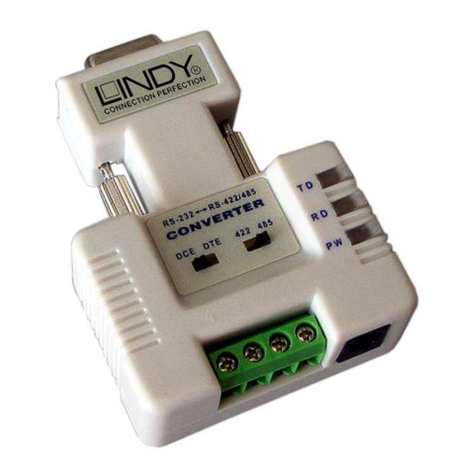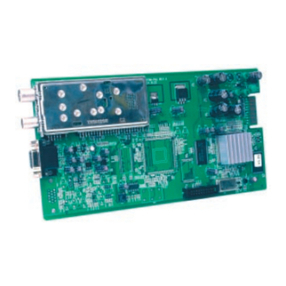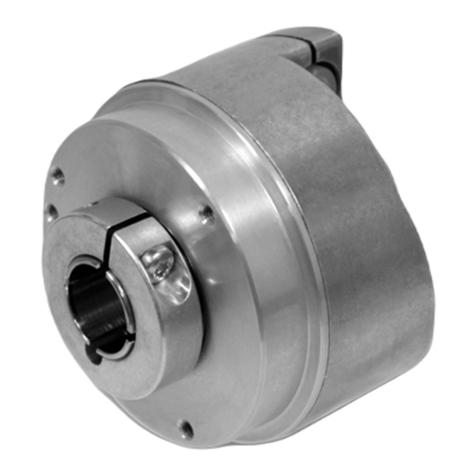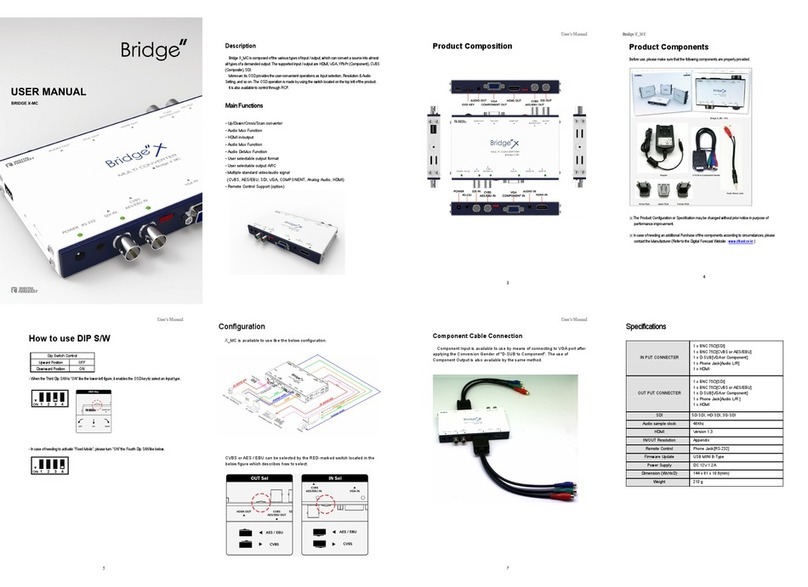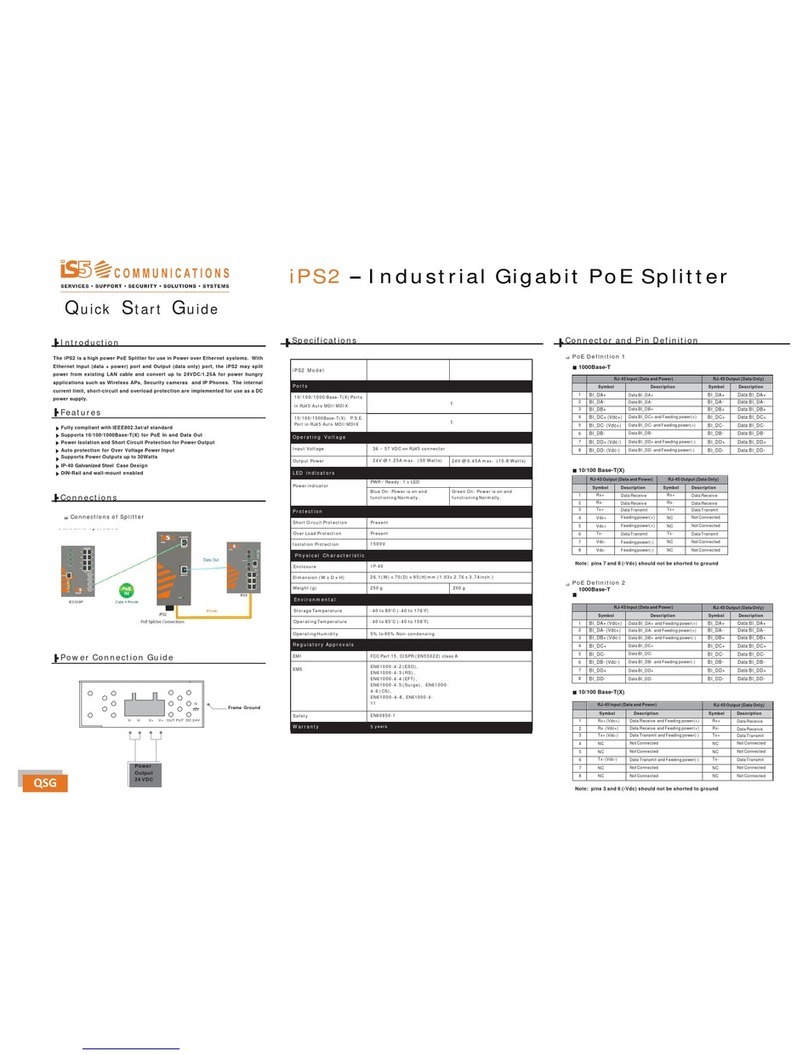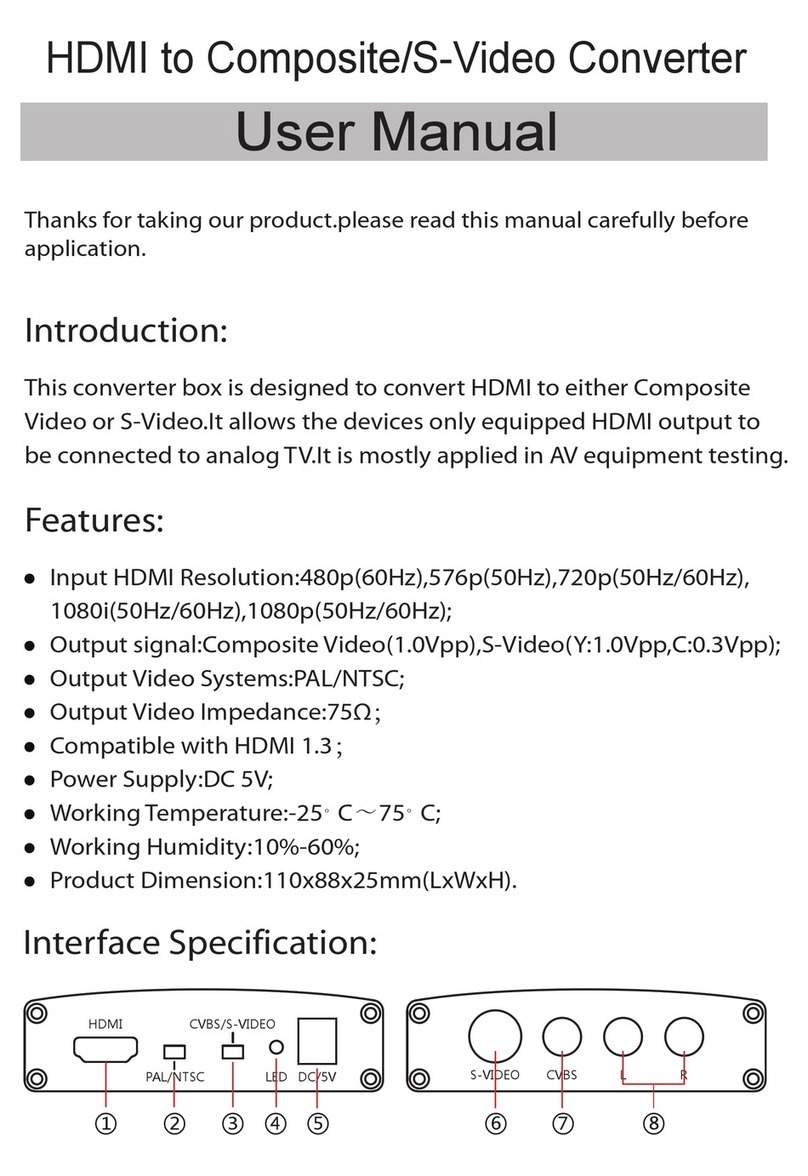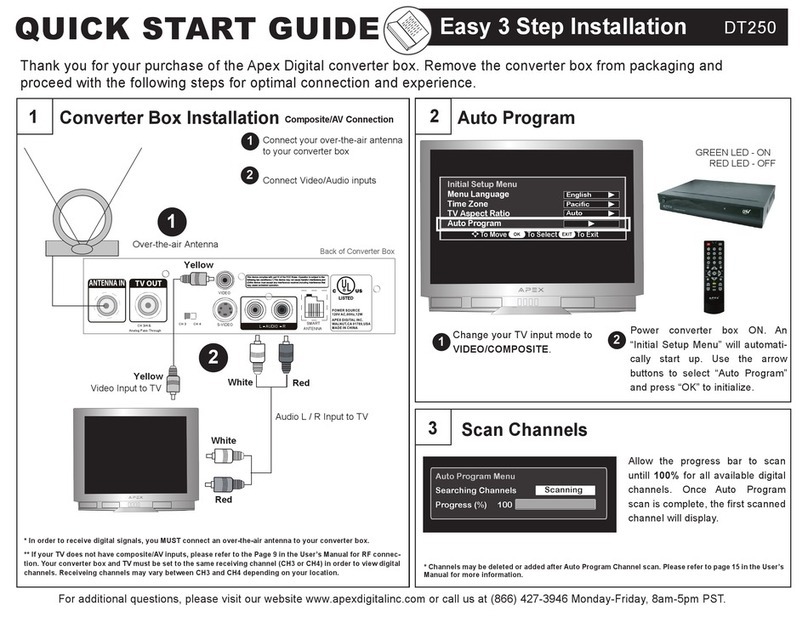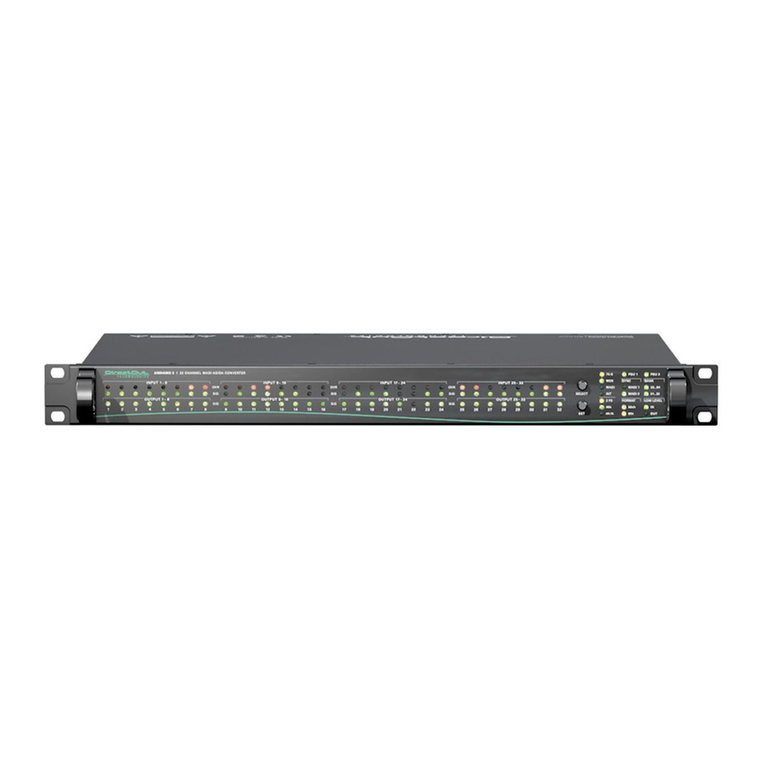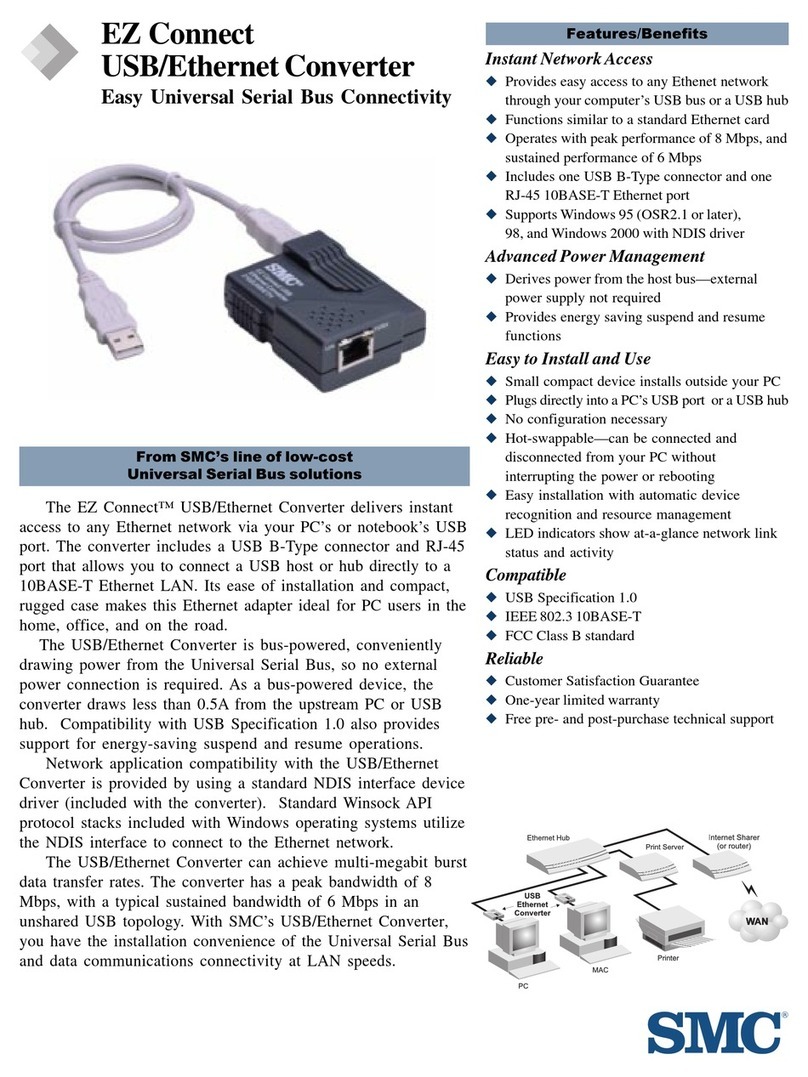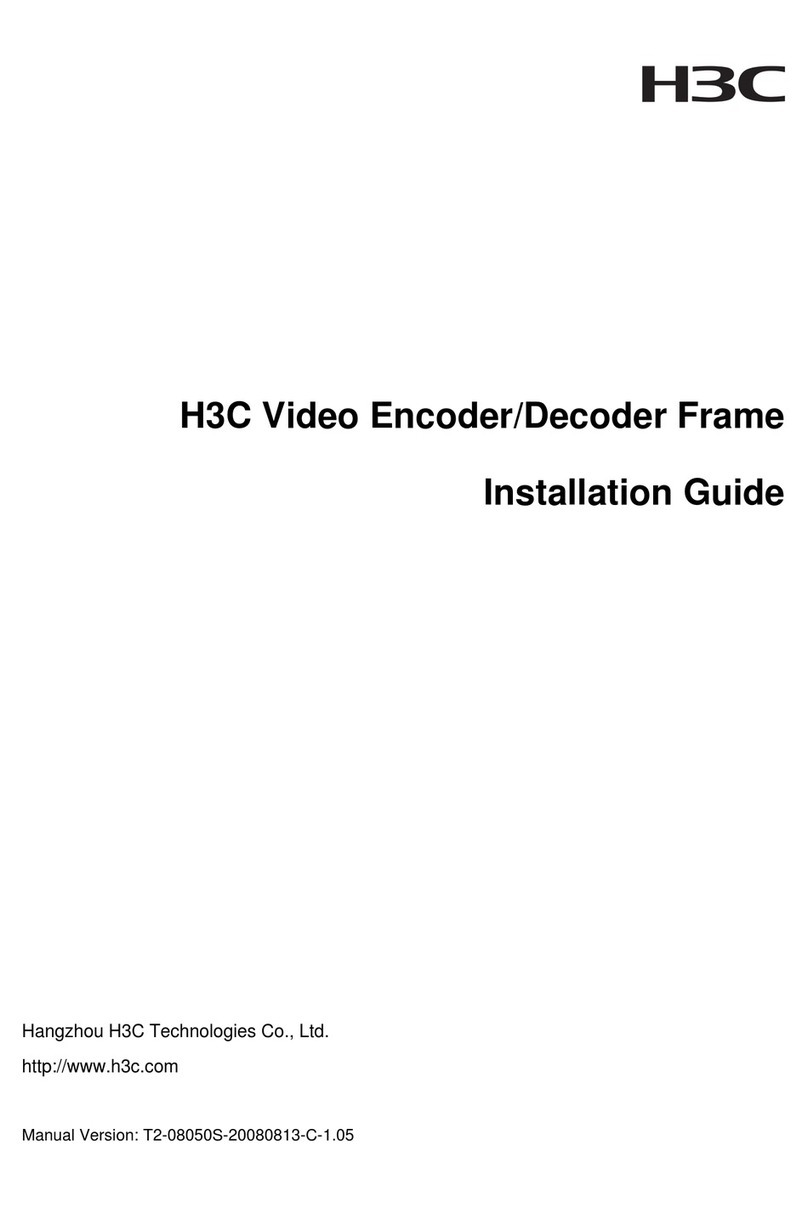4
Fiber Optic Cleaning Guidelines
Fiber Optic transmitters and receivers are extremely susceptible to contamination by particles
of dirt or dust, which can obstruct the optic path and cause performance degradation. Good
system performance requires clean optics and connector ferrules.
1.
Use fiber patch cords (or connectors, if you terminate your own fiber) only from a
reputable supplier; low-quality components can cause many hard-to-diagnose problems
in an installation.
2.
Dust caps are installed at Black Box to ensure factory-clean optical devices. These
protective caps should not be removed until the moment of connecting the fiber cable to
the device. Should it be necessary to disconnect the fiber device, reinstall the protective
dust caps.
3.
Store spare caps in a dust-free environment such as a sealed plastic bag or box so that
when reinstalled they do not introduce any contamination to the optics.
4.
If you suspect that the optics have been contaminated, alternate between blasting with
clean, dry, compressed air and flushing with methanol to remove particles of dirt.
Electrostatic Discharge Precautions
Electrostatic discharge (ESD) can cause damage to your add-in modules. Always observe the
following precautions when installing or handling an add-in module or any board assembly.
1.
Do not remove unit from its protective packaging until you’re ready to install it.
2.
Wear an ESD wrist grounding strap before handling any module or component. If you
do not have a wrist strap, maintain grounded contact with the system unit throughout any
procedure requiring ESD protection.
3.
Hold boards by the edges only; do not touch the electronic components or gold
connectors.
4.
After removal, always place the boards on a grounded, static-free surface, ESD pad or in
a proper ESD bag. Do not slide the board over any surface.
WARNING
!
Integrated circuits and fiber optic components are
extremely susceptible to electrostatic discharge damage. Do not handle
these components directly unless you are a qualified service technician and
use tools and techniques that conform to accepted industry practices.
1
About the GigaBit Miniature Media Converters
The Gigabit Miniature Media Converter is a Gigabit Ethernet, miniature media converter. This
device converts 1000Base-SX (multi-mode) or LX (single-mode) fiber to 1000Base-T copper,
and always operates at Full- Duplex. Single-strand single mode fiber versions are also
available.
The following Gigabit Miniature Media Converters are available:
Part Number Description
LGC010A TX/SX-MM850-SC [300 m]
LGC011A TX/LX-SM1310-SC [10 Km]
LGC012A TX/LX-SM1310/PLUS-SC [40 Km]
LGC013A TX/LX-SM1550/LONG-SC [70 Km]
Single-Strand Fiber
Part Number Description
LGC014A TX/SSLX-SM1310-SC (1310xmt/1550rcv) [10 Km]
LGC015A TX/SSLX-SM1550-SC (1550xmt/1310rcv) [10 Km]
LGC016A TX/SSLX-SM1310/PLUS-SC (1310xmt/1550rcv) [40 Km]
LGC017A TX/SSLX-SM1550/PLUS-SC (1550xmt/1310rcv) [40 Km]
INSTALLATION TIPS
Several models of the Gigabit Miniature Media Converter support single-strand fiber
for operation. Since single-strand fiber products use optics that transmit and receive
on two different wave-lengths, single-strand fiber products must be deployed in pairs.
For example, connect Gigabit Miniature Media Converter, TX/SSLX-SM1310-SC
(which has 1310 xmt and 1550 rcv) to a product which has 1550 xmt and 1310 rcv,
e.g. Gigabit module, TX/SSLX-SM1550-SC. The two connected products must also
have the same speed and distance capabilities (i.e. both are single-mode [20km] or
both are single/PLUS [40km]).
NOTE
Use only the supplied Black Box power supply. Using a non-Black Box power source will
void the warranty.
